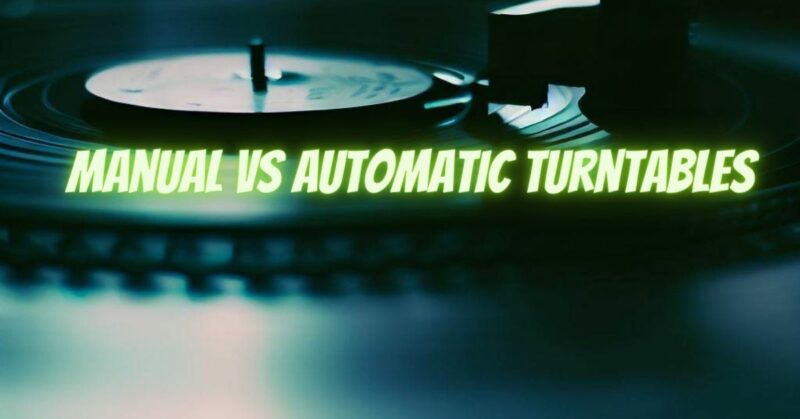When it comes to turntables, the choice between manual and automatic models is a matter of personal preference and convenience. Each type offers distinct advantages and considerations based on the user’s needs and preferences. In this article, we will explore the pros and cons of manual and automatic turntables, highlighting their specific usage scenarios to help you make an informed decision.
Manual Turntables:
- Advantages:
- Control and Interaction: Manual turntables offer a hands-on experience, allowing users to engage directly with the vinyl record. You have full control over the placement of the stylus on the record, enabling precise cueing and manual operation.
- Reduced Mechanical Complexity: Manual turntables generally have fewer moving parts compared to automatic turntables. This simplicity can contribute to improved audio performance by minimizing potential sources of mechanical noise or vibration.
- Usage Scenarios:
- Audiophile Listening: Manual turntables are popular among audiophiles who prioritize a pure and direct connection with the music. They provide a more involved and intimate listening experience, allowing for precise control over cueing, playback, and tonearm adjustments. Audiophiles often prefer manual turntables for critical listening sessions where attention to detail is paramount.
Automatic Turntables:
- Advantages:
- Convenience and Automation: Automatic turntables offer convenience and automation features that simplify the listening experience. They typically include automatic tonearm cueing, return, and shut-off mechanisms. With the push of a button, the turntable can automatically start, stop, and return the tonearm to its resting position.
- Protection for Vinyl: The automatic features of these turntables can help protect your vinyl records from accidental damage. The automated cueing and return mechanisms ensure gentle and precise handling, reducing the risk of scratching or mishandling the stylus.
- Usage Scenarios:
- Casual Listening and Multi-Tasking: Automatic turntables are well-suited for casual listening environments and situations where convenience and ease of use are paramount. They allow users to enjoy vinyl records without the need for manual operation or constant attention. Automatic turntables are particularly suitable for multi-tasking situations where you may want to enjoy music while engaging in other activities.
Considerations:
- Audio Performance: Manual turntables are often favored by audiophiles due to their potential for superior audio performance, as fewer mechanical components can contribute to better sound quality. However, technological advancements have improved the performance of automatic turntables, narrowing the gap between the two types in terms of audio reproduction.
- Maintenance and Repair: Manual turntables generally have simpler mechanisms, which can make maintenance and repair tasks more accessible for users. Automatic turntables, with their additional components and automation features, may require more specialized attention if repairs are needed.
Conclusion:
The choice between a manual or automatic turntable ultimately depends on your personal preferences and the listening experience you desire. Manual turntables offer hands-on control and interaction, appealing to audiophiles seeking precise control and involvement. On the other hand, automatic turntables provide convenience and automation features, making them suitable for casual listeners or those seeking a more effortless experience.
Consider your priorities, desired level of control, and convenience when making your decision. Ultimately, both manual and automatic turntables can deliver enjoyable vinyl playback experiences. Embrace the type that aligns with your preferences and enhances your connection to the music, allowing you to fully enjoy the magic of vinyl.


